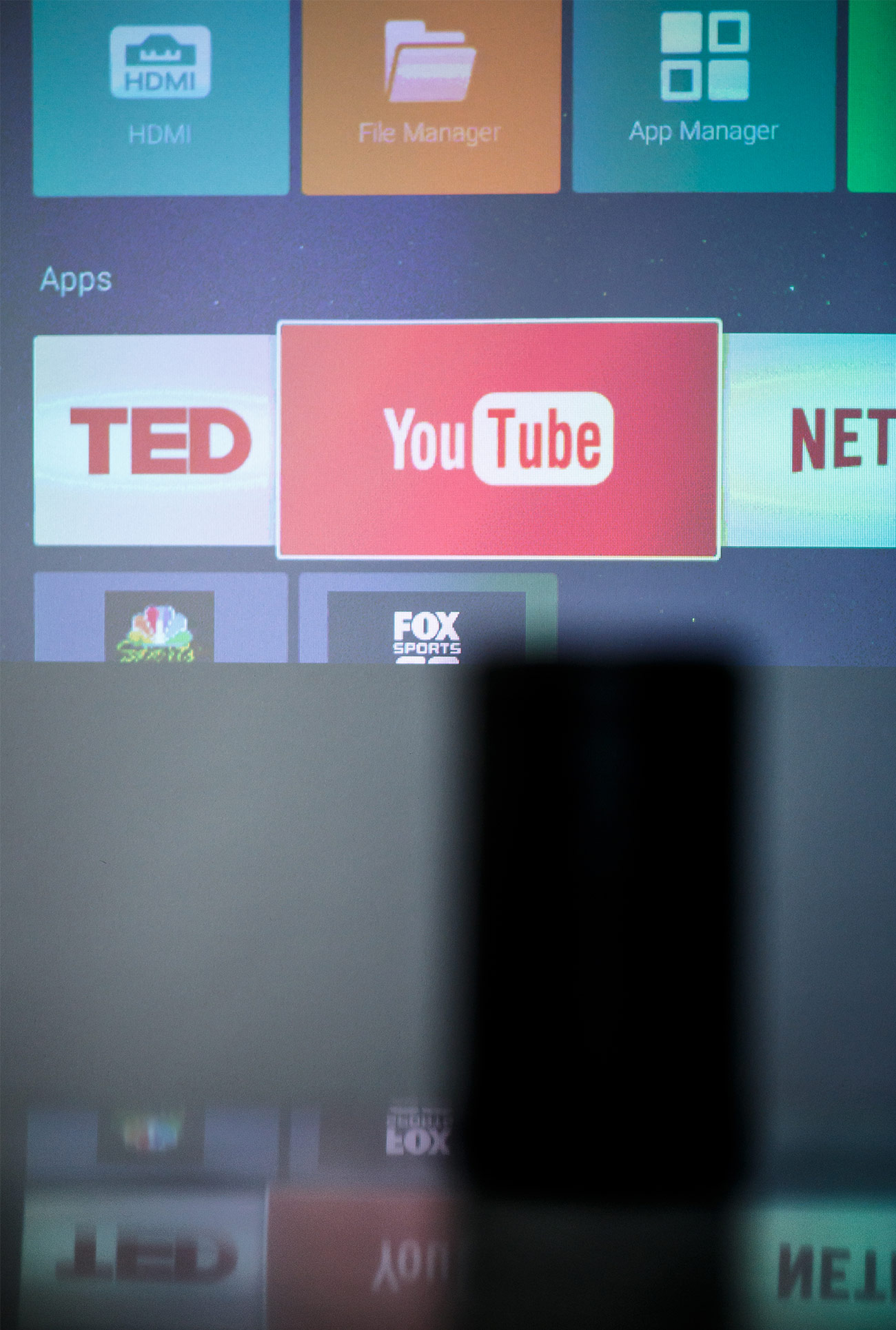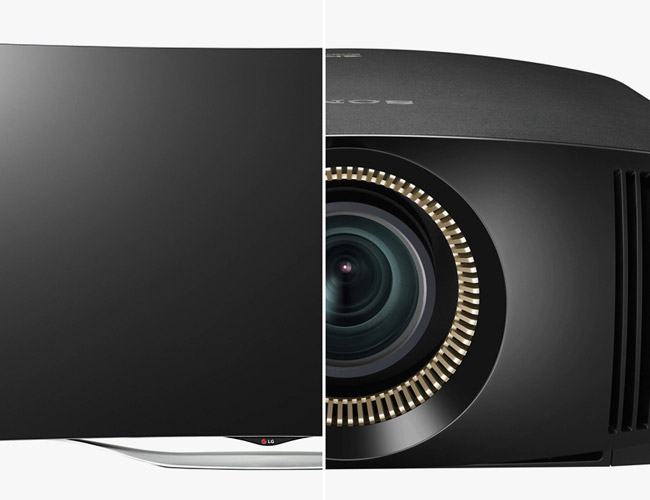Anker is best known for its affordable-yet-dependable wireless chargers, power banks and cables, but the gadget accessory titan has broadened its product portfolio of late to Bluetooth speakers, portable generators and other electronics. The Nebula Capsule is another fairly new entry for Anker. It’s a smaller, cheaper version and more refined model of the $600 Nebula Mars that Anker released last year. The Nebula Capsule is a $350 portable projector that started as an Indigogo campaign last summer — it was advertised as “the world’s most advanced pocket cinema” — and reached 2,446-percent of its funding goal.
It’s the size of a soda can and can produce up to a 100-inch screen. It’s also a 360-degree Bluetooth speaker. It has an HDMI port so you can connect a laptop or video game console, but it can also work as a standalone device. It has built-in wifi and runs on an Android 7.1 operating system. It can play apps like Netflix, YouTube, Hulu and Amazon Prime too.
The Good: The Nebula Capsule is easy to use, with no elaborate setup process. It’s surprisingly fantastic for enlarging presentations from your laptop and playing retro video game consoles, like the Analog Super Nt or Nintendo NES. It works well for streaming sporting events and TV shows, too. For apps like Netflix, you can download shows directly to the Nebula Capsule and watch them later.
Who It’s For: Good question. It could actually make a great travel gadget for business professionals. I see this as fun party gadget for anybody who wants to have a temporary big screen on which to watch games or shows or play video games. They shouldn’t care too much about picture quality, though, and should be prepared to use the Nebula Capsule in a fairly dark room if they’re looking to make a really big screen.
Watch Out For: Don’t expect it the picture resolution to be amazing. Its resolution (854×480) is actually slightly worse than HD TV; you can plug your Xbox One, PS4 or Nintendo Switch console into it and it’ll work — but the picture won’t be nearly as good as it would be on your TV. In order for you to get a 100-inch screen, the projector needs to be roughly 10 feet away from the wall or screen. Battery life is a little bit of an issue. It lasts a little over four hours when streaming content, but it can last much longer (approx. 30 hours) when used just as a Bluetooth speaker. The audio quality is fine, but nothing special. At the $350, it’s not cheap.
Alternatives: Options are relatively stim. The AAXA M6 ($599) produces a higher-resolution picture (native 1080p), but it’s not as portable and significantly more expensive. The Philips PPX4350 ($280) is another option that’s affordable, but it’s not as bright — 50 lumens vs the Nebula Capsule’s 100 lumens.
Review: For the better part of a week I used the Nebula Capsule as my primary television instead of my 2017 Vizio M-series ($580), which is considered by many one of the best budget 4K TVs you can buy. I fancy myself a casual gamer, so I primarily hooked my Nintendo Switch and Analog Super Nt consoles up to the Nebula Capsule via HDMI. I battled my roommate in Mario Kart 8 Deluxe. And I played the original Pokemon, a GameBoy Color game through the Super Nt’s Adapter Cartridge. I had a blast.

The Nebula Capsule runs on an Android 7.1 operating system, meaning you can just boot it up and, as long as it’s connected to wi-fi, you can watch apps like Netflix, Hulu and NBC Sports.
As a standalone projector, the Nebula Capsule worked great for streaming Netflix and watching sporting events, specifically Premier League and Champions League soccer matches on the NBC Sports and Fox Soccer Go apps. For all these things, the Nebula Capsule needed to be connected to wi-fi. I didn’t take it outside or camping, but theoretically, you can download shows and watch them offline the same way you can on your smartphone or tablet. Provided you have the right adapter, USB Type-C to Thunderbolt 2 ($49), it’s easy enough to connect the projector to your laptop and enlarge a YouTube video or PowerPoint presentation.
So can the Nebula Capsule replace your smart TV? For a short time, probably. But I learned pretty fast that if you want to have a big screen — near 100-inches — the room that you’re in needs to be pretty dark, otherwise you’re not going to see much. The speaker isn’t great for listening to long periods of time; the projector naturally makes a buzz when it’s running that interferes with the sound if played at low volumes. The remote, and the smartphone app that can also act as a remote, feel pretty rudimentary, too. The battery isn’t great, but if you keep it plugged in you don’t have to worry about that four-hour limit. For me, the Nebula is fun for gaming or even a group movie night — maybe for business presentations, too. But for most people who want to get the most out their gaming consoles and streaming devices, that’s not what this is for.
What Others Are Saying:
• “The speaker is surprisingly powerful and can fill a small room easily. It’s not going to compete with 5.1 audio systems, or with something like the HomePod, but it’s plenty good enough that watching a show or movie on the Capsule is pleasant, and never falls down on the back of bad sound. Plus, I almost always pack a dedicated Bluetooth speaker on my trips away, anyway – the Capsule doubles as one, and takes up as little or even less space than most, with equivalent sound quality.” — Darrell Etherington, TechCrunch
• “It seems trite to say but despite all its flaws, the Nebula Capsule feels like a glimpse of the future. I can imagine a day several years from now where these products are much cheaper, even more portable, and easy to take with you everywhere. This is an exciting prospect, as I imagine it will open up new forms and contexts for our entertainment.” — David Chen, Slashfilm
Key specs
Screen size: up to 100-inches
Resolution: 854×480 pixels
Lamp Life: 30,000 hours
Brightness: 100 lumens
Operating system: Android 7.1
Connectivity: wifi, Bluetooth 4.1
Battery: 5200mAh
Ports: HDMI, micro-USB (charge)
Cost per inch of screen. It’s the kind of fuzzy value calculation that warms many home theater shoppers to the idea of buying a projector in the first place. But is it really that simple? Read the Story


